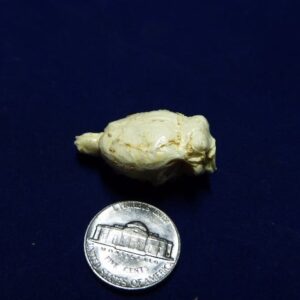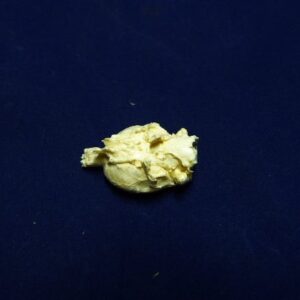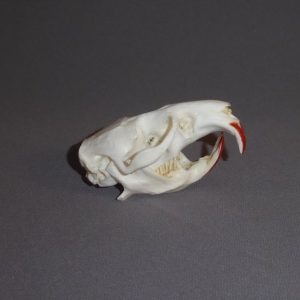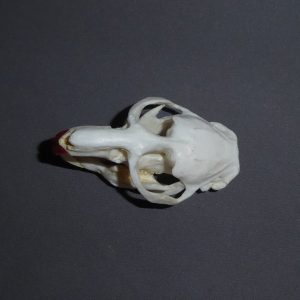All items sold on this website are polyurethane resin replicas, made in USA. No real or natural bone is available on this site.
O. zibethicus Skull Replica measures 69mm or 2.3 inches. O. zibethicus Skull Replica is Museum quality polyurethane cast made in USA. 2-part skull (separate cranium & jaw). Known as Muskrat. Our precise skull can be used as a teaching tool, museum skull exhibit, home decor skull, or office decor skull.
The O. zibethicus or Muskrat, the only species in genus Ondatra and tribe Ondatrini, is a medium-sized semiaquatic rodent native to North America and an introduced species in parts of Europe, Asia, and South America.
The O. zibethicus is found in wetlands over a wide range of climates and habitats. Muskrats or Ondatra zibethicus have important effects on the ecology of wetlands, and is a resource of food and fur for humans.
O. zibethicus are covered with short, thick fur, which is medium to dark brown or black in color, with the belly a bit lighter as the age increases, it turns a partly gray in color.
The fur has two layers, which help protect them from the cold water. They have long tails covered with scales rather than hair, and to aid them in swimming, are slightly flattened vertically, which is a shape that is unique to them.
When O. zibethicus walk on land, their tails drag on the ground, which makes their tracks easy to recognize.
Muskrat or O. zibethicus spend most of their time in the water and are well suited for their semi-aquatic life. They can swim under water for 12 to 17 minutes.
Muskrats are most active at night or near dawn and dusk. They feed on cattail and other aquatic vegetation. They do not store food for the winter, but sometimes eat the insides of their push-ups.
O. zibethicus also eat small animals, such as freshwater mussels, frogs, crayfish, fish, and small turtles. They follow trails they make in swamps and ponds. When the water freezes, they continue to follow their trails under the ice.
Muskrats, like most rodents, are prolific breeders. Females can have two or three litters a year of six to eight young each. The babies are born small and hairless and weigh only about 22 g (340 gr).
In southern environments, young muskrats mature in six months, while in colder northern environments, it takes about a year. Muskrat populations appear to go through a regular pattern of rise and dramatic decline spread over a six- to 10-year period.
O. zibethicus fur is warm, becoming prime at the beginning of December in northern North America. In the early 20th century, the trapping of the animal for its fur became an important industry there.
During that era, the fur was specially trimmed and dyed to be sold widely in the US as “Hudson seal” fur. Muskrats were introduced at that time to Europe as a fur resource, and spread throughout northern Europe and Asia.
-
Muskrat Brain Replica
$26.00Plant materials compose about 95% of their diets, but they also eat small animals, such as freshwater mussels, frogs, crayfish, fish, and small turtles. They can swim under water for…
-
Muskrat Male Skull Replica
$61.00Plant materials compose about 95% of their diets, but they also eat small animals, such as freshwater mussels, frogs, crayfish, fish, and small turtles.
-
Muskrat Negative Footprint Replica
$10.00Muskrat or Ondatra zibethicus are covered with short, thick fur, which is medium to dark brown or black in color, with the belly a bit lighter as the age increases,…





